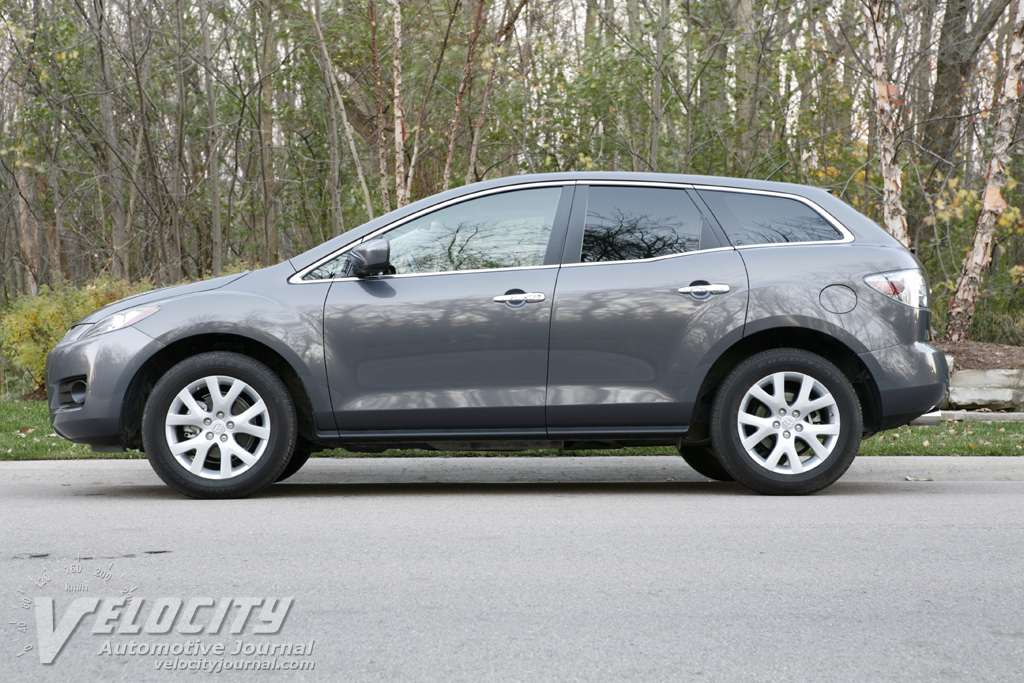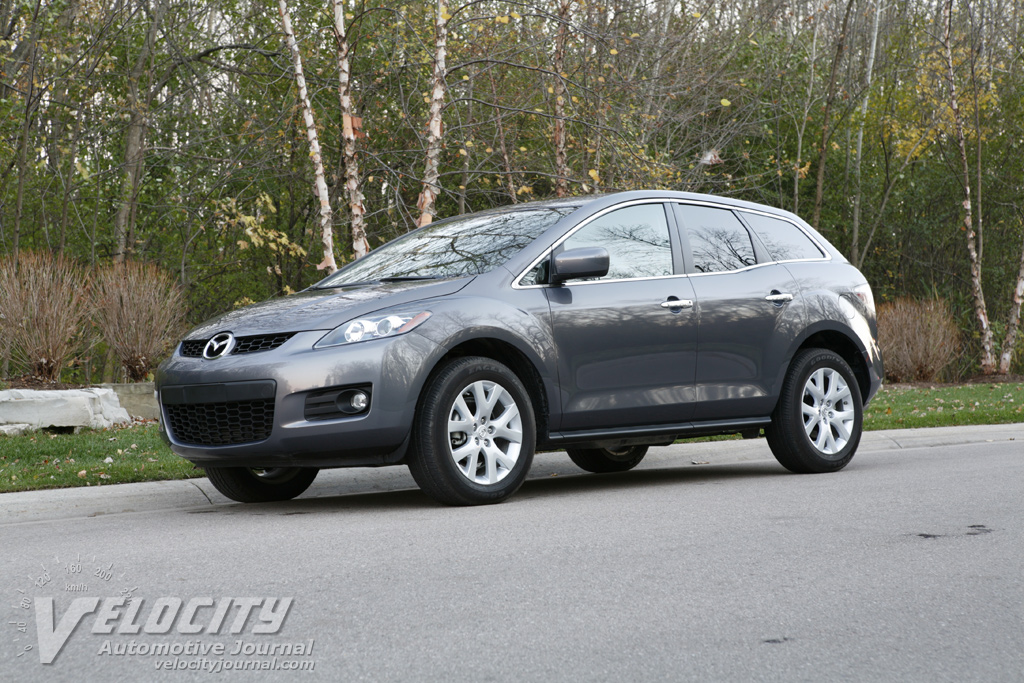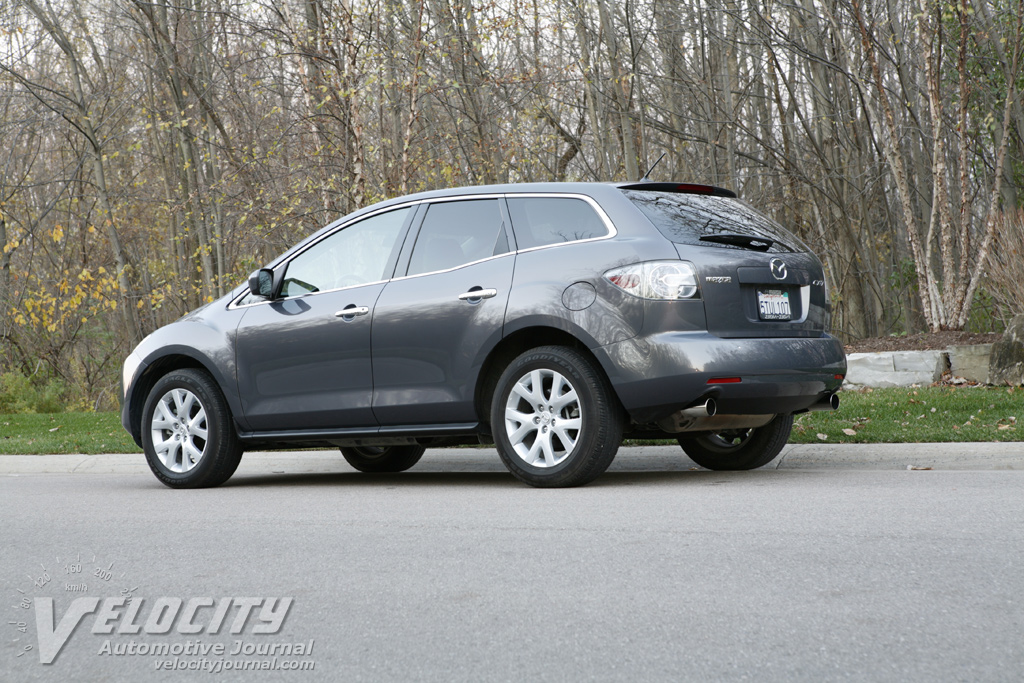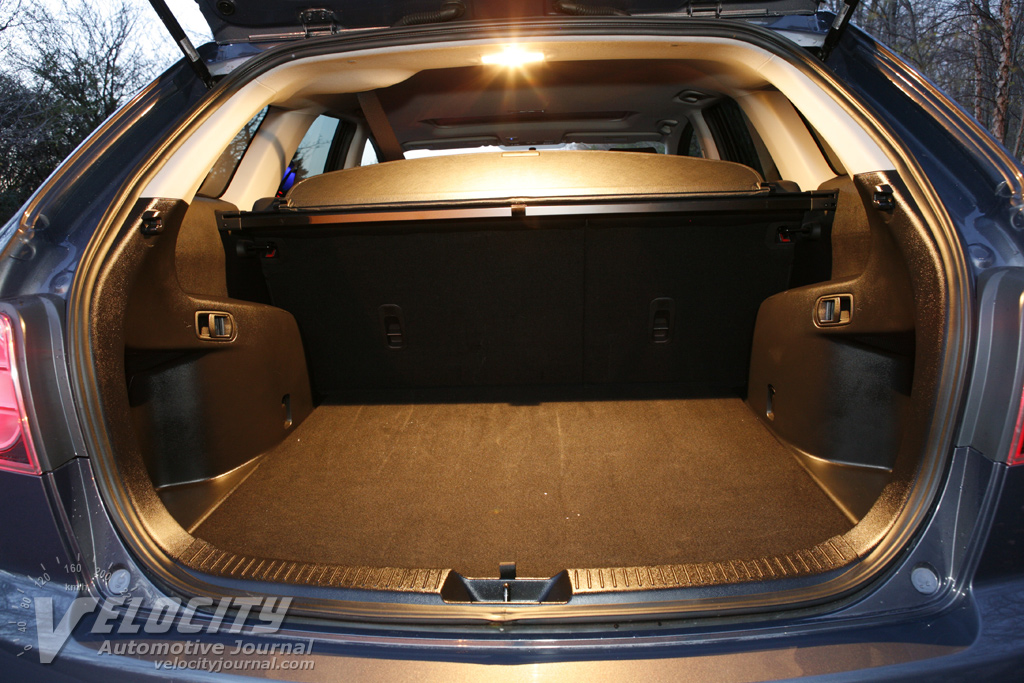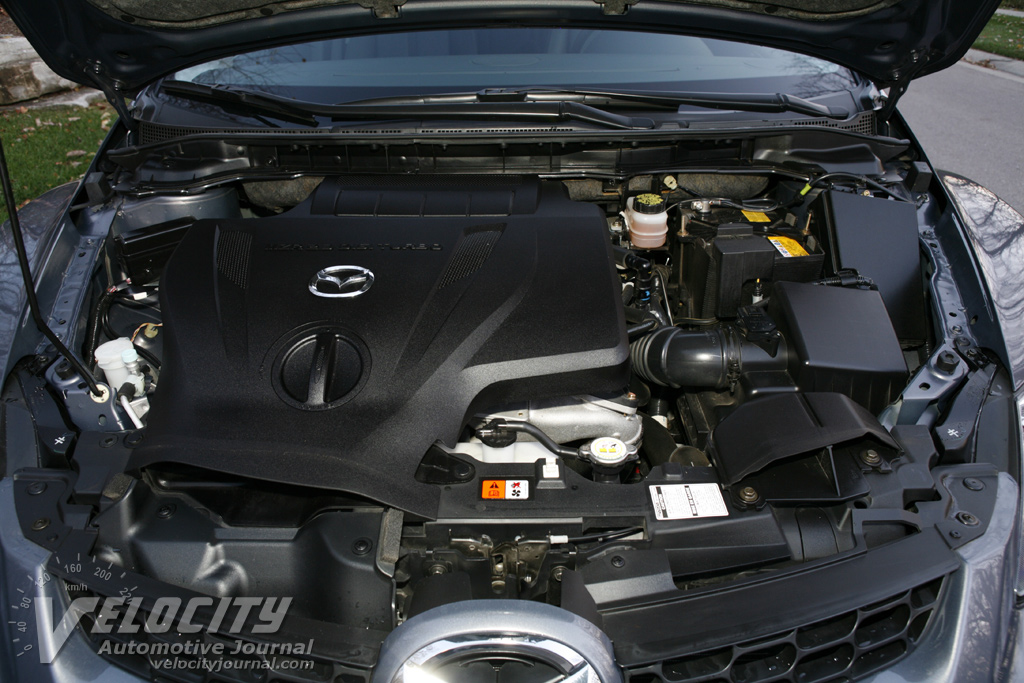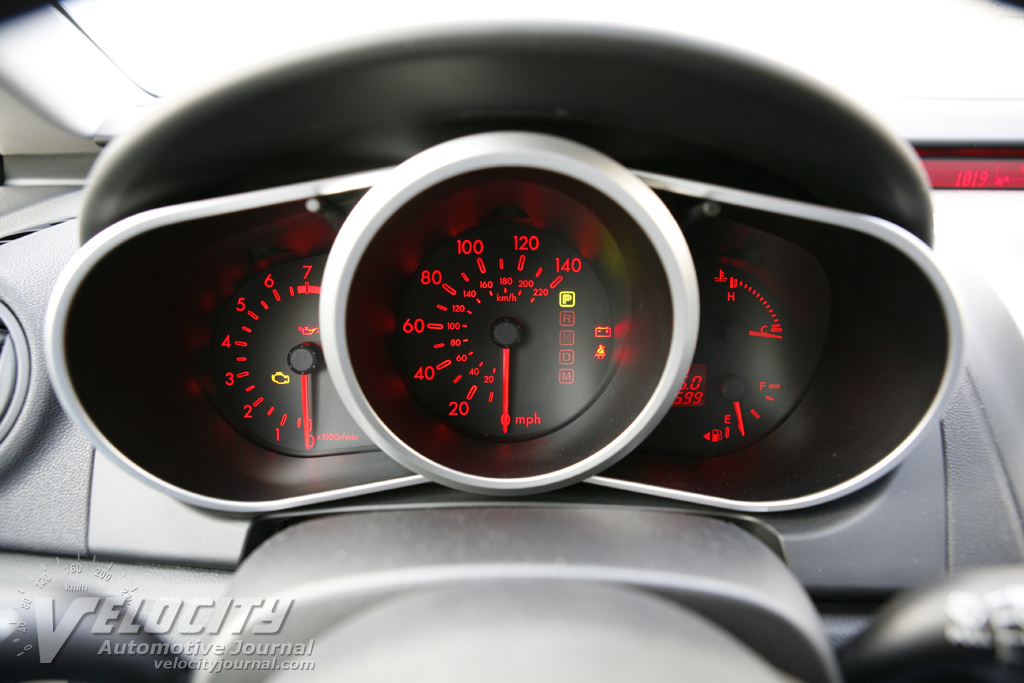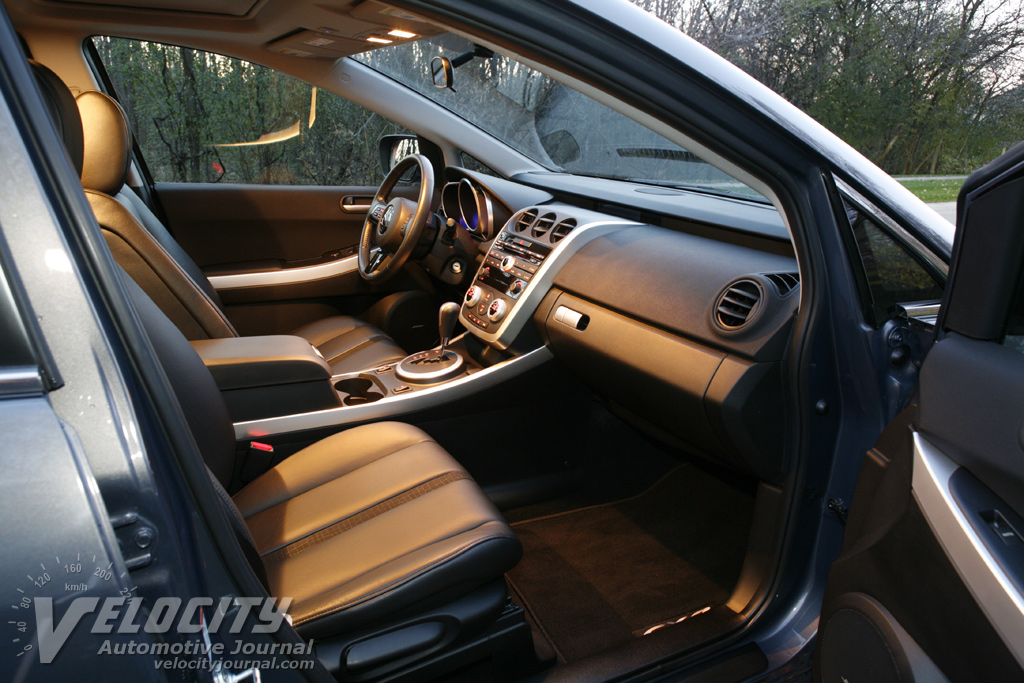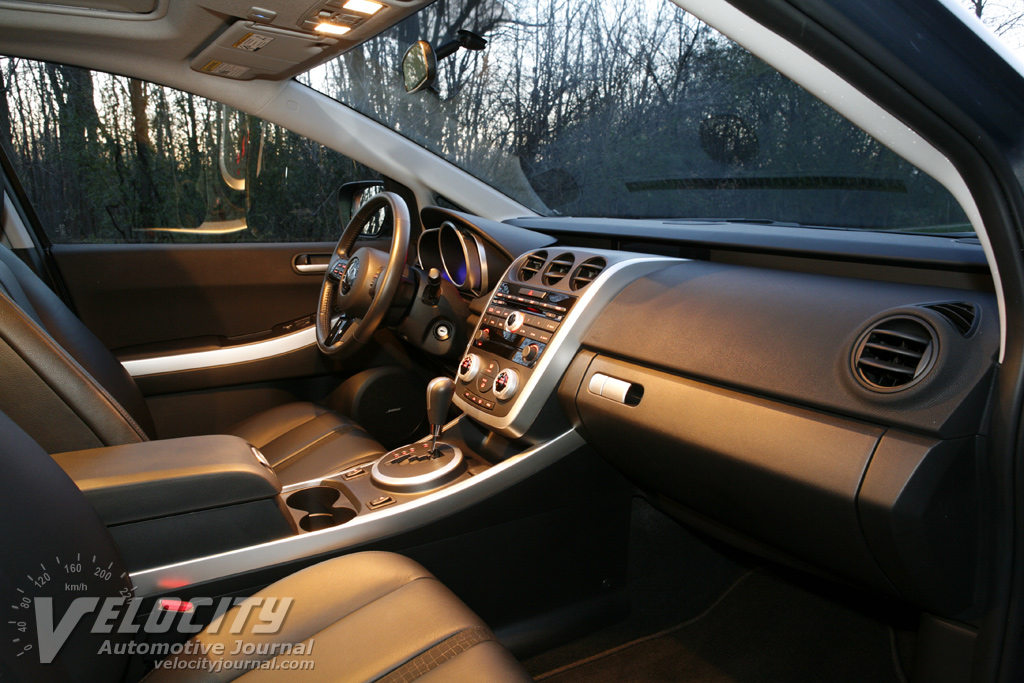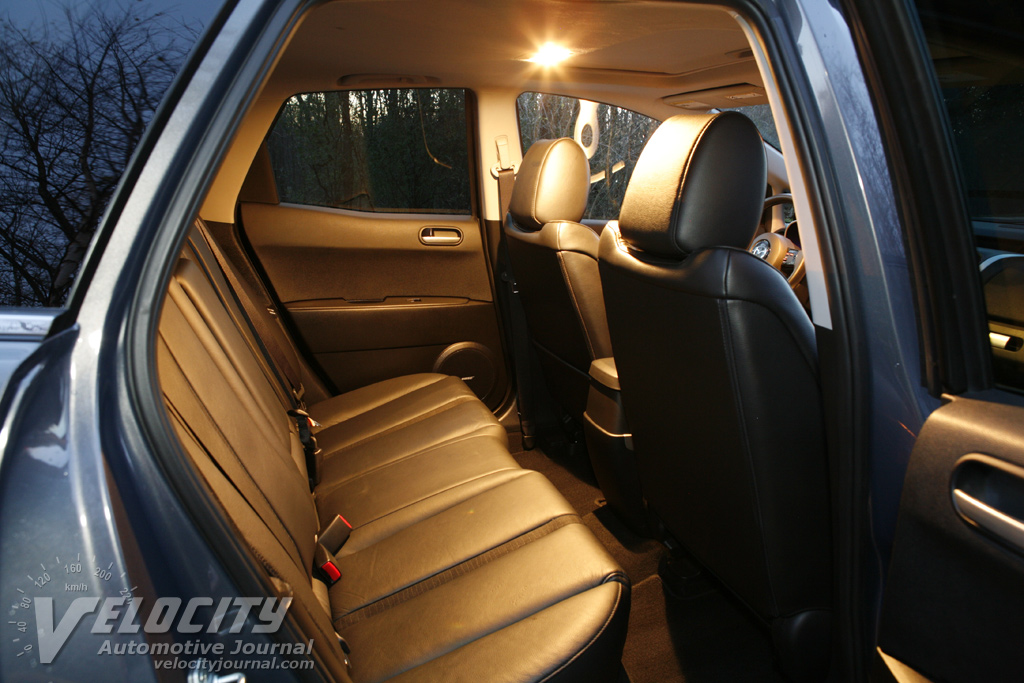Review: 2007 Mazda CX-7 Grand Touring AWD
11/02/2006
Shahed Hussain
The sole SUV in Mazda's lineup has been the long-running Tribute, which hasn't exactly been a hot seller. With most manufacturers introducing more car-like SUVs, Mazda took the opportunity to develop the CX-7, which resembles a cross between the Mazda6 sedan and the RX-8 sports car. Although from some angles, the combination of styles is less than flattering, the CX-7 is certainly distinctive, and easily identifiable as a Mazda. With its sleek styling, the CX-7 is effectively differentiated from its Tribute stable mate, which appeals to a more utility-oriented clientele.
Mazda has three trim levels for the CX-7: Sport, Touring, and Grand Touring. All models have a 2.3L 244-bhp turbo inline-4, a detuned version of the engine shared with the hot Mazdaspeed3 and Mazdaspeed6 sport sedans. A 6-speed automatic sends power to the front or all four wheels. The fuel economy penalty for optional AWD is minimal (a 1 MPG reduction in city driving), so it makes sense to take advantage of the improved handling and traction; assuming the $2,000 cost is not a deterrent. Mazda includes Dynamic Stability Control and Traction Control as standard on all models. Side-impact and side-curtain airbags are standard as well. An optional rear view camera should calm jittery parents concerned about their children's safety.
Step up to the CX-7's power adjustable driver's seat (manual seat controls for the front passenger), and you see an expanse of coal black leather and plastic trim. Leather upholstery is optional on the less expensive Sport and Touring models. Silver painted strips on the doors, center console and dashboard add some sorely needed contrast to the dark interior. The dashboard and upper door trim, covered in a pebble texture hard plastic, does not blend harmoniously with the more subtly grained leather and vinyl surfaces. A minor complaint, but easily remedied by Mazda.
As is common practice, the leather wrapped steering wheel contains audio and cruise control buttons on the spokes. Behind the wheel are a deeply inset 8,000 RPM tachometer to the left, a central 140-MPH speedometer, and smaller fuel and temperature gauges on the right. The orange electroluminescent backlighting won't wash out in bright sunlight. At night, blue LED lights bathe the instruments in a soft glow. To the left, below the steering wheel is a rotary knob that adjusts headlight aim. This aiming knob can minimize annoying glare for other drivers when the CX-7 is heavily laden. Between the front seats is a huge lidded bin suitable for storing compact discs, soft drinks, or even a purse.
On the center dash console are large round knobs for the climate controls and the audio system. Look closely, and you will see seven semicircle notches on each silver knob to remind you that this is a CX-7. Next to the gated shifter console are rocker switches for the heated seats. Although there is only one temperature setting, it should prove toasty enough in cold weather. An optional Bose(R) 6-CD audio system cranks out superb sound. Available as part of a $1,585 package which includes a moonroof, the Bose system will be appreciated by audiophiles, but may be overkill for value-oriented buyers.
Rear seat room is adequate for sub-6' passengers, but avoid the headroom-stealing sunroof if you have tall friends. Although the rear seats fold down, they don't quite lie completely flat, which limits usable cargo capacity. Clearly, the CX-7 sacrifices utility for style. If you visit Home Depot regularly, the Tribute or a larger SUV is better suited for your needs.
Mazda took advantage of the 6-speed automatic available in the Ford corporate parts bin to equip the CX-7 with a class-leading transmission. Even though it shifts unobtrusively, an available manual mode lets you take control when you want. Coupled with the intercooled 2.3L turbo, the 6-speed gearbox has ideally spaced ratios to keep the engine in its torque sweet spot (258 lb.-ft. @ 2,500 RPM) most of the time. Below 2,000 RPM the engine betrays its 4-cylinder roots with sluggish throttle response off-boost. Sweep past 2,500 RPM and the CX-7 picks up the pace. Between 3,000 and 5,500 RPM, the turbo comes alive and shoots the CX-7 forward with ease. As the revs approach the 6,500 RPM redline, power falls off considerably, as the turbo boost flattens. A constant buzz felt in the steering and body reminds the driver that this inline-4 lacks refinement compared to the V-6 engines common in this segment. We wonder why Mazda did not substitute its 3.0L V-6, or borrow the new 3.5L V-6 available from Ford. Both engines should offer better low-RPM response, although at the expense of midrange punch compared to the inline four. Although Mazda offer an optional hitch to tow up to 2,000 lbs., the CX-7 is really not suited for frequent towing duties.
Mazda went to great lengths to tune the CX-7 for a sporty ride and precise handling. Standard 18-inch alloy wheels are shod with Goodyear Eagle RS-A 235/60-18 M+S tires. Ride borders on stiff on bumpy roads, but body motions are quickly damped by the firm suspension settings.
A car-based chassis allows natural, accurate steering feel, which increases driver confidence around curves. Owners of sport sedans will acclimate easily to the CX-7, as long as they understand that even a sporty SUV is still an SUV.
On the highway, the CX-7 tracks accurately, but its tall stature is affected by crosswinds, which require minor steering corrections to maintain lane position. Partly to blame are the Goodyear Eagle RS-A tires, which are not known for exceptional handling. More performance oriented tires would undoubtedly improve steering response, but at the expense of snow traction. Warm climate CX-7 owners may consider a different tire choice to take advantage of the firm suspension tuning.
Another area where Mazda paid attention is the brakes. Many SUVs skimp on braking performance, with limp pedal feel and mediocre panic stop distances. Mazda equips the CX-7 with 11.6" dual piston ventilated front discs, coupled with 11.9" single piston ventilated rear discs. This is serious brake hardware, and it shows, because the CX-7 has a reassuringly firm brake pedal that hauls this SUV down from speed with confidence. We wish that other manufacturers would pay greater attention to proper brake performance, which is often sub par on many SUVs.
Mazda did a credible job melding Ford's components with its own to create the CX-7. With pricing starting in the mid $20K range, the CX-7 is ideally positioned to take on many SUV competitors. A wide range of options allows buyers to customize the CX-7 according to their needs. A well-equipped CX-7 AWD Grand Touring can be had for around $30K, which is a good deal. The Achilles heel of the CX-7 is the buzzy 2.3L inline-4, while ideal for the sporty Mazdaspeed3 and Mazdaspeed6, has inappropriate torque characteristics for a 2-ton SUV. All other comparable vehicles in this segment offer standard or optional V-6 engines for good reason. Mazda should add the 3.5L V-6 available in the Ford Edge as an option, or as the standard engine. In a marketplace overcrowded with SUVs, it is unclear if the CX-7 will grab a sizable piece of this segment. Nonetheless, despite its flaws, the CX-7 fills an unexploited niche for Mazda, and is certainly a worthwhile addition to its expanding portfolio of vehicles.

